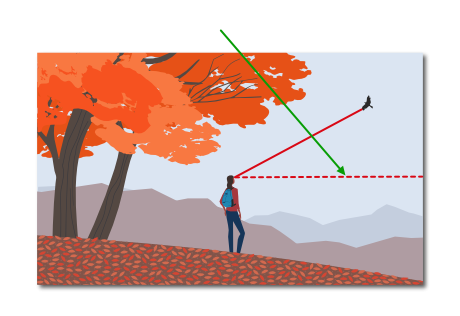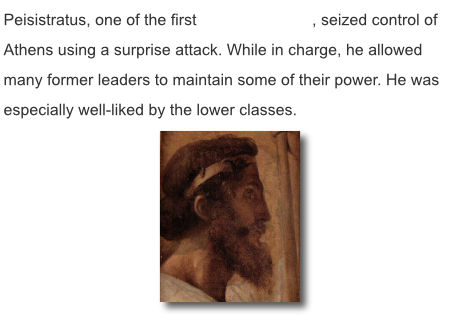Language Arts 7th Grade
-
Phrases and Clauses4 Topics|30 Quizzes
-
Phrases and Clauses
-
Lesson Test: Phrases and Clauses
-
Types of Phrases
-
Identify Noun Phrases
-
Identify the Function of a Noun Phrase
-
Identify Prepositional Phrases
-
Identify the Function of a Prepositional Phrase
-
Identify Infinitive Phrases
-
Identify Participle Phrases
-
Identify Appositive Phrases
-
Identify the Type of Phrase
-
Determine the Function of a Phrase Within a Sentence
-
Identify Noun Phrases
-
Lesson Test: Types of Phrases
-
Identify Noun Phrases
-
Identify the Function of a Noun Phrase
-
Identify Prepositional Phrases
-
Identify the Function of a Prepositional Phrase
-
Identify Infinitive Phrases
-
Identify Participle Phrases
-
Identify Appositive Phrases
-
Identify the Type of Phrase
-
Determine the Function of a Phrase Within a Sentence
-
Identify Noun Phrases
-
Phrases and Clauses
-
Sentence Structure4 Topics|22 Quizzes
-
Mechanics2 Topics|2 Quizzes
-
Precise Language2 Topics|10 Quizzes
-
Vocabulary Strategies and Use4 Topics|33 Quizzes
-
Context Clues
-
Lesson Test: Context Clues
-
Affixes and Roots
-
Use Prefixes to Determine the Meaning of Unfamiliar Words 1 Part 1
-
Use Prefixes to Determine the Meaning of Unfamiliar Words 1 Part II
-
Use Prefixes to Determine the Meaning of Unfamiliar Words 2 Part I
-
Use Prefixes to Determine the Meaning of Unfamiliar Words 2 Part II
-
Use Suffixes to Determine the Meaning of Unfamiliar Words 1 Part I
-
Use Suffixes to Determine the Meaning of Unfamiliar Words 1 Part II
-
Use Suffixes to Determine the Meaning of Unfamiliar Words 2 Part I
-
Use Suffixes to Determine the Meaning of Unfamiliar Words 2 Part II
-
Use Suffixes to Sort Words by Part of Speech
-
Use Greek and Latin Roots to Determine the Meaning of Unfamiliar Words 1 Part I
-
Use Greek and Latin Roots to Determine the Meaning of Unfamiliar Words 1 Part II
-
Use Greek and Latin Roots to Determine the Meaning of Unfamiliar Words 2 Part I
-
Use Prefixes to Determine the Meaning of Unfamiliar Words 1 Part 1
-
Lesson Test: Affixes and Roots
-
Use Prefixes to Determine the Meaning of Unfamiliar Words 1
-
Use Prefixes to Determine the Meaning of Unfamiliar Words 2
-
Use Suffixes to Determine the Meaning of Unfamiliar Words 1
-
Use Suffixes to Determine the Meaning of Unfamiliar Words 2
-
Use Suffixes to Sort Words by Part of Speech
-
Use Greek and Latin Roots to Determine the Meaning of Unfamiliar Words 1
-
Use Greek and Latin Roots to Determine the Meaning of Unfamiliar Words 2
-
Use Greek and Latin Roots to Determine the Meaning of Unfamiliar Words 3
-
Make Connections Among Words that Share Affixes or Roots
-
Use Prefixes to Determine the Meaning of Unfamiliar Words 1
-
Context Clues
-
Figurative and Descriptive Language2 Topics|25 Quizzes
-
Figurative Language
-
Identify Similes and Metaphors
-
Identify Personification
-
Identify Verbal Irony
-
Identify Alliteration
-
Identify Onomatopoeia
-
Identify Puns
-
Categorize Figurative Language
-
Determine the Meaning of Similes and Metaphors in Context
-
Interpret Personification in Context
-
Interpret Common Idioms in Context
-
Interpret the Meaning of an Allusion
-
Identify Allusions
-
Identify Similes and Metaphors
-
Lesson Test: Figurative Language
-
Identify Similes and Metaphors
-
Identify Personification
-
Identify Verbal Irony
-
Identify Alliteration
-
Identify Onomatopoeia
-
Identify Puns
-
Categorize Figurative Language
-
Determine the Meaning of Similes and Metaphors in Context
-
Interpret Personification in Context
-
Interpret Common Idioms in Context
-
Interpret Common Adages and Proverbs in Context
-
Identify Allusions
-
Interpret the Meaning of an Allusion
-
Identify Similes and Metaphors
-
Figurative Language
Deprecated: is_quiz_accessable is deprecated since version 3.4.0! Use learndash_is_quiz_accessable instead. in /home/succes48/successtutoring.us/wp-includes/functions.php on line 5213
Quiz Summary
0 of 10 Questions completed
Questions:
Information
You have already completed the quiz before. Hence you can not start it again.
Quiz is loading…
You must sign in or sign up to start the quiz.
You must first complete the following:
Results
Results
0 of 10 Questions answered correctly
Your time:
Time has elapsed
You have reached 0 of 0 point(s), (0)
Earned Point(s): 0 of 0, (0)
0 Essay(s) Pending (Possible Point(s): 0)
Categories
- Not categorized 0%
- 1
- 2
- 3
- 4
- 5
- 6
- 7
- 8
- 9
- 10
- Current
- Review
- Answered
- Correct
- Incorrect
-
Question 1 of 10
1. Question
Read the passage and Label the image with the correct term.
The angle of elevation is the angle made between a viewer and an object above the horizon, such as a hill or mountain. The opposite is the angle of depression, the angle between a viewer and an object below the horizon, such as the floor of a valley. For these measurements, the horizon is not necessarily the point where the land meets the sky, but rather an imaginary horizontal line extending straight out from the viewer. These angles have many real-world uses. Surveying, or taking measurements of land, relies on accurately determining these angles. CorrectIncorrect
CorrectIncorrect -
Question 2 of 10
2. Question
Read the passage and Complete the sentence with the correct term.
Feudalism was a system of land management, ownership, and protection common in medieval Europe. Under the feudal model, a king who was in possession of land divided its governance among the lords, or people from important families. These lords further divided responsibility for the land among their vassals, or knights who were sworn to fight for them. These knights allowed peasants called serfs to live on the land in exchange for farming it. CorrectIncorrect
CorrectIncorrect -
Question 3 of 10
3. Question
Read the passage and Label the image with the correct term.
An ecosystem is a system of plants, animals, and environmental factors influenced by one another. The plants and animals are biotic factors, living parts of the ecosystem. Equally important are the climate, soil, water, and other nonliving components. Together, these environmental factors that are not alive are known as abiotic factors. One important abiotic factor is the parent material, the deep bedrock of a landscape. The quality of the soil is closely linked to its parent material, and every factor of the ecosystem is affected by the soil. CorrectIncorrect
CorrectIncorrect -
Question 4 of 10
4. Question
Read the passage. Complete the passage with the correct term.
War takes on many different forms depending on the motives and resources of the belligerents, or people and nations engaged in the war. The most common form is conventional warfare, war carried out with ordinary weapons between nations that have declared war upon each other. Some conflicts are between groups with radically different resources or methods. This kind of conflict may be considered guerilla or asymmetric warfare. On the other hand, a cold war is waged only with political and economic means but no direct military involvement. Often, a cold war results in proxy wars, wars prompted by nations that do not themselves become directly involved. CorrectIncorrect
CorrectIncorrect -
Question 5 of 10
5. Question
Read the passage. Complete the sentence with the correct term.
For a variety of reasons, writers often seek to include humor in their writing. Sometimes, this is done to provide a lighthearted break from a serious subject, in which case it is known as comic relief. In other cases, the entire work is funny, as in the case of a farce, an exaggerated and intentionally ridiculous story. Writers have many strategies for creating humor. They may create puns by playing on the meanings of multi-meaning words or words that sound similar to each other. Much humor can arise from having characters accidentally create a pun by using a slightly different word than they had intended. A mistake in word choice, whether it creates a pun or not, can be referred to as a malaprop. CorrectIncorrect
CorrectIncorrect -
Question 6 of 10
6. Question
Read the passage .Complete the passage with the correct term.
Bar charts and histograms look very similar to each other, but they communicate very different information. A bar chart uses bars to show how information is split into categories. So, a bar chart showing favorite lunches might have bars for salads, pizza, and sandwiches. A histogram also uses bars to illustrate data, but it shows the way numbers in one category are distributed. So, a histogram about how long people spend eating lunch might have bars for 0-10 minutes, 11-20 minutes, and 21-30 minutes. When a histogram has the tallest bars grouped in the middle of the chart, the histogram shows what is called a normal distribution. In this case, the histogram is often shown as a bell curve, a graph with a bell-shaped line illustrating the data. CorrectIncorrect
CorrectIncorrect -
Question 7 of 10
7. Question
Read the passage. Complete the passage with the correct term.
The words tyrant, dictator, and autocrat have changed meaning over the course of history. Originally, tyrant was the name for any ancient Greek ruler who came to power by take-over rather than through the law. A dictator was originally an ancient Roman ruler temporarily given absolute authority during a period of crisis. Autocrat has a less specific historic use, referring to any ruler who completely controls a government without sharing power. In their original contexts, tyrants, dictators, and autocrats may or may not have governed well and kindly. Cruel leadership was often ended with a coup, a popular uprising, since legal means of removing such rulers was unavailable. CorrectIncorrect
CorrectIncorrect -
Question 8 of 10
8. Question
Read the passage. Complete the sentence with the correct term.
Poems are often arranged according to predictable patterns. Many poems are made up of multiple couplets, or pairs of back-to-back rhyming lines. Couplets are short enough patterns that they can be used within other types of poems, like the sixteen-line sonnet or the five-line limerick. Frequently, the sentences of a poem are spread across multiple couplets. When this is done in such a way that a complete thought has not been expressed by the end of a line, it is called enjambment. CorrectIncorrect
CorrectIncorrect -
Question 9 of 10
9. Question
Read the passage .Label the image with the correct term.
The curve that a cable makes when suspended from points at each end is called a catenary. A simple suspension bridge, such as a rope bridge, adopts the catenary curve formed by its supporting cables. The simple suspension bridge should not be mistaken for the suspension bridge, in which a flat bridge is supported by ropes hanging from towers. Because of the way suspension bridge cables are pulled down by the weight of the bridge, they form parabolas rather than catenaries. A parabola narrows at a sharper angle than a catenary does. CorrectIncorrect
CorrectIncorrect -
Question 10 of 10
10. Question
Read the passage. Complete the sentence with the correct term.
Writers can use the structure of their writing to give emphasis or develop a sense of harmony. For example, writers may create an antimetabole, using mirrored phrases like “eat to live, do not live to eat.” A similar technique is the chiasmus, a pair of phrases with a mirrored structure but not repeated words. Other techniques involve the careful use of interruption. For instance, a diacope is a word or phrase repeated after one or a few interrupting words. Sometimes, writers even interrupt a single word. The technique, known as tmesis, involves breaking up one word by placing a different word in the middle. For example, a common tmesis occurs when another is broken up in the phrase a whole nother. CorrectIncorrect
CorrectIncorrect
